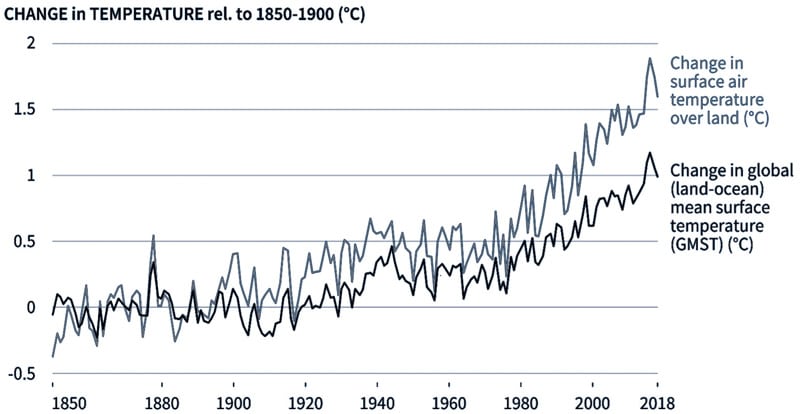It’s Complicated: The Role of Land in Global Warming
- Edwin S. Rubenstein
- October 28, 2019
- Forum Papers
- Forum Paper
- 0 Comments
Click here for a downloadable, printable PDF version
IT’S COMPLICATED: THE ROLE OF LAND IN GLOBAL WARMING
An NPG Forum Paper
by Edwin S. Rubenstein
There they go again: Another massive UN climate change report – 107 authors, from 53 countries, examining 7,000 research articles. Another exercise in denial. The Intergovernmental Panel on Climate Change’s special report on land, rolled out in Geneva in early August, takes on two questions: how land use contributes to climate change, and how climate change affects land.
Ask the man in the street about the causes of global warming and he will rattle off things like factories, power plants, gas guzzling vehicles, and other modern activities driven by fossil fuels. But agriculture? There are no clouds of smoke wafting over corn fields or pastures. Agricultural optics are squeaky clean. Farmers get a free pass.
Reality check: CO2 is colorless and odorless. It is trapped in the Earth during the process of photosynthesis. From the moment man first tilled the soil for crops and pastureland he released CO2 into the atmosphere.
The study lays out a crucial, even cruel, paradox. Humans have harnessed land to become the highly successful species we are today. But our destructive patterns of land use – particularly agriculture, deforestation, and the development of wetlands – now contribute 23% of all human caused greenhouse gas emissions.
The good news: Earth still removes more emissions than it emits. Land currently removes a net 6 gigatons of greenhouse gas emissions per year, equivalent to the entire annual emissions of the United States.
The bad news: The ability of land to cleanse the atmosphere is being slammed by climate change. UN Scientists find that land temperatures increased 1.5 degrees C. (2.7 degrees F.) between 1850-1900 and 2006-2015, 75% more than the global average which reflects temperature changes over both land and oceans:

Virtually every idea and concept in Climate Change and Land has been discussed by NPG and other population control groups. The only thing missing is, well, our main thing: the need to reduce global population to halt the degradation of the Earth’s land and water resources.
Not one of the scientists commissioned by the UN explicitly acknowledges the need to cut population. Instead, the UN-ers present a potpourri of weak alternatives that, absent population reduction, could actually make things worse.
For example, the UN report finds that largescale planting of new forests in treeless areas could offset large amounts of CO2 but would require repurposing land currently used to grow crops. That could potentially increase food prices by 80% and put up to 300 million people at risk of hunger, according to report author Pamela McElwee, an associate professor of ecology at Rutgers University.
“That’s a very serious trade-off,” McElwee says, adding “Let’s understand those trade-offs now and think about them, but also think about things that maybe would help us avoid those trade-offs.”
A smaller global population would, of course, do just that, by enabling new forest land to coexist with lower food prices. But that will take time, lots of time.
Twenty years ago a group headed by David Pimentel, Professor of Ecology and Environmental Biology at Cornell University, suggested that Earth’s carrying capacity was 2 billion people. At that level a European standard of living could be made available to everyone indefinitely, with no diminution in land, water, and energy supply
resources…
Continue reading the full Forum paper by clicking here.
Ed Rubenstein, president of ESR Research, is an experienced business researcher, financial analyst, and economics journalist. He has written extensively on federal tax policy, government waste, the Reagan legacy, and – most recently – on immigration. He is the author of two books: The Right Data (1994) and From the Empire State to the Vampire State: New York in a Downward Transition (with Herbert London). His essays on public policy have appeared in The Wall Street Journal, The New York Times, Harvard Business Review, Investor’s Business Daily, Newsday, and National Review. His TV appearances include Firing Line, Bill Moyers, McNeil-Lehr, CNBC, and Debates-Debates. Mr. Rubenstein has a B.A. from Johns Hopkins and a graduate degree in economics from Columbia University.

